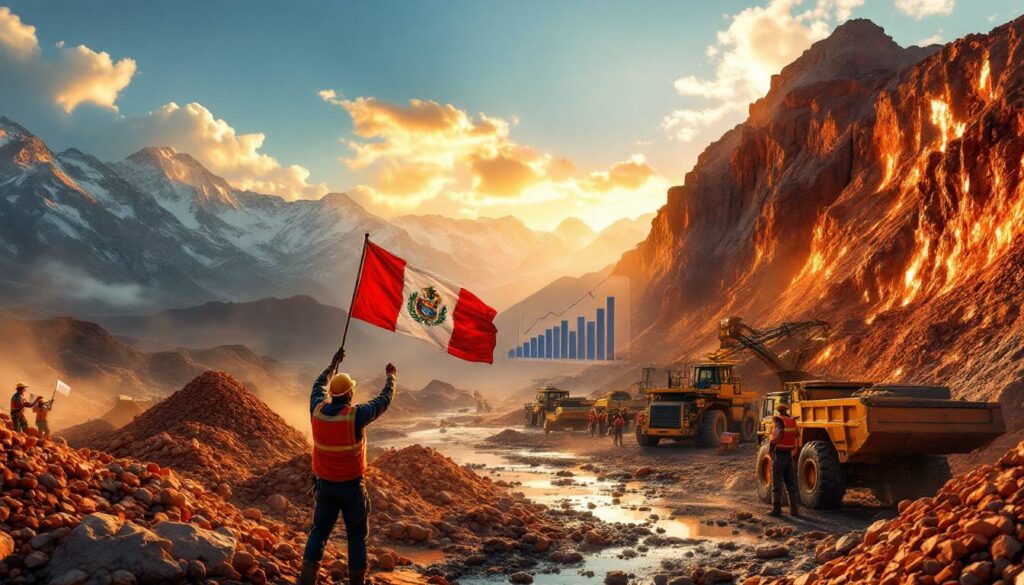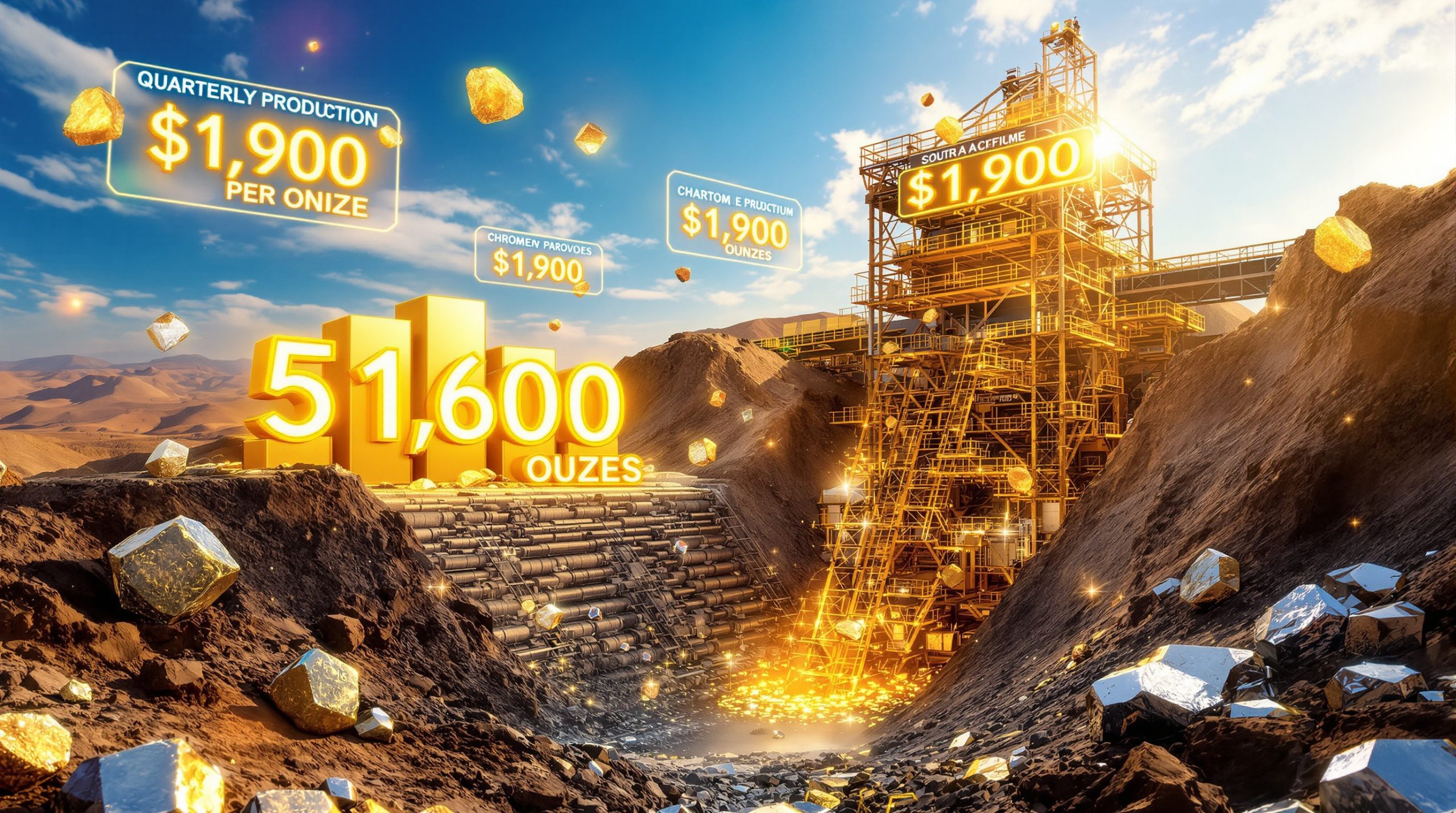Understanding Peru's Copper Mining Protests: Causes, Impact, and Future Implications
Peru's copper mining sector has become the center of intense conflict as informal miners protest regulatory changes threatening their livelihoods. These demonstrations have disrupted one of the world's most important copper producing regions, creating ripple effects throughout global copper supply chains and highlighting the complex socioeconomic realities of resource-dependent communities.
What Triggered the Recent Peru Copper Mining Protests?
The current unrest stems from regulatory changes affecting thousands of small-scale miners who operate in a legal gray area between formal and informal mining.
The Temporary Mining Permit Controversy
Informal miners with expiring temporary permits initiated protests in late June 2025, blocking critical transportation routes and disrupting major mining operations. The situation escalated in early July when Peru's Ministry of Energy and Mines removed more than 50,000 miners from the regulatory program designed to transition informal operations into the formal sector.
According to Mining Technology, at least 45,000 of these miners had reportedly shown "no activity for over four years," suggesting the government's action targeted dormant registrations rather than active operations. However, this interpretation is contested by mining communities who claim the documentation requirements are prohibitively complex.
The Ministry has stated its aim to formalize 31,000 informal miners by the end of 2025, representing approximately 38% of the estimated informal mining workforce. This target has been criticized by industry experts as ambitious given the historical challenges of formalization efforts.
Regulatory Context: Peru's mining formalization process has undergone multiple iterations since 2012, with each new administration adjusting requirements and deadlines. This regulatory uncertainty has created significant mining permit challenges for miners attempting to navigate the compliance process.
Economic Dependence on Informal Mining
The reality for thousands of Peruvian families is stark: small-scale mining operations provide their primary source of income in regions with few economic alternatives. The regulatory uncertainty surrounding temporary permits creates immediate financial instability for these mining communities.
Key challenges in the formalization process include:
- Bureaucratic complexity requiring technical documentation beyond many miners' resources
- High compliance costs for environmental impact studies and safety equipment
- Land title verification challenges in regions with overlapping claims
- Limited access to financing for equipment upgrades required for formalization
The socioeconomic impact is particularly severe in the highland regions where mining has been practiced for generations and represents not just economic activity but cultural identity for many communities.
How Have the Protests Impacted Peru's Copper Industry?
The demonstrations have created significant operational challenges for both major mining companies and the broader Peruvian economy.
Disruption to Critical Infrastructure
For two weeks, protesters maintained a blockade of a major copper transit route in the Cusco region, creating a logistical bottleneck that affected operations of several prominent mining companies including MMG, Glencore, and Hudbay Minerals. These companies manage some of Peru's largest copper mines and rely heavily on these transportation corridors.
The blockade presented a dual challenge:
- Outbound logistics: Preventing processed copper concentrate from reaching ports for export
- Inbound supplies: Delaying critical equipment, fuel, and materials needed for continued operations
MMG's Las Bambas mine, which accounts for approximately 2% of global copper production, has been particularly vulnerable to transportation disruptions due to its reliance on road transportation through communities that have historically contested mining activities.
Economic Consequences
These disruptions threaten Peru's position as the world's third-largest copper producer, a status that underpins much of the country's export economy and government revenues.
While precise production losses have not been publicly quantified, the prolonged nature of the blockades suggests significant impacts on output volumes. Even temporary production adjustments at major mines can result in:
- Reduced royalty payments to local and national governments
- Disrupted supply commitments to international buyers
- Increased operational costs for logistics workarounds
- Employment uncertainty for formal mine workers
Supply Chain Implications:
The timing of these disruptions coincides with growing rising copper demand driven by renewable energy infrastructure and electric vehicle manufacturing, potentially exacerbating market concerns about reliable supply.
Corporate Responses
Mining companies including MMG and Hudbay Minerals have communicated their concerns to government officials while navigating difficult decisions about production schedules and workforce management.
The recurring nature of such protests may contribute to investment hesitancy in Peru's mining sector, as companies increasingly factor political and social stability into risk assessments. Several mining executives have privately expressed frustration at being caught between government regulations and community expectations.
Companies are increasingly seeking government intervention to secure supply routes while simultaneously expanding community engagement efforts to build more sustainable relationships with affected populations.
What Led to the Temporary Halt in Protests?
After weeks of economic disruption, protest leaders announced a conditional suspension of demonstrations to facilitate negotiations.
Negotiation Developments
Protest suspension was announced by leader Luis Huaman in mid-July 2025, establishing a temporary truce until at least July 18, 2025. According to Mining Technology (citing Reuters), Huaman characterized the pause as "a truce" rather than a resolution, emphasizing the conditional nature of the suspension.
This development followed intense pressure from both government officials and mining companies affected by the transportation disruptions. A committee consisting of informal miner representatives and government officials was scheduled to meet in Lima during this period to discuss potential solutions.
Protesters have maintained their core demand for concrete legal pathways to continue operations, with particular emphasis on:
- Extended timelines for compliance with environmental regulations
- Simplified documentation requirements for small-scale operators
- Transitional support for miners working toward formal status
- Protection from criminalization during the formalization process
Government Engagement
The current administration has faced criticism for its handling of the formalization program, with accusations of prioritizing administrative metrics over practical implementation. Ongoing discussions between protest leaders and government officials represent an attempt to balance competing priorities:
- Maintaining regulatory standards for environmental protection and labor safety
- Acknowledging the socioeconomic realities of mining-dependent communities
- Preserving Peru's reputation as a stable mining jurisdiction for international investors
- Addressing legitimate concerns from formal mining companies about unfair competition
The government faces mounting pressure to develop sustainable solutions that address both immediate concerns and long-term structural issues in the mining sector.
Conditional Nature of the Suspension
Protest leader Luis Huaman made it clear that the suspension was temporary, warning that demonstrations would resume without substantive agreement. This conditional cessation highlights the unresolved nature of the underlying issues despite the temporary halt in visible conflict.
The characterization of the pause as a "truce" rather than resolution signals the protesters' strategic approach to negotiations – maintaining pressure while creating space for dialogue. The fundamental demands remain unchanged: legal pathways to maintain mining operations without criminalization.
Quote from Protest Leader: "It's a truce…protests would restart if no agreement" – Luis Huaman (as reported by Mining Technology, citing Reuters, July 16, 2025)
What Are the Broader Implications of Peru's Mining Conflicts?
These protests reveal deeper tensions within Peru's resource governance framework and highlight challenges faced by resource-rich nations worldwide.
Regulatory Challenges
The ongoing conflict exemplifies the tension between formalization goals and economic realities in resource-dependent regions. Peru's regulatory framework attempts to balance multiple competing objectives:
- Environmental protection: Reducing mercury use and preventing water contamination
- Labor standards: Ensuring worker safety and preventing exploitation
- Tax compliance: Bringing mineral production into formal economic channels
- Livelihood preservation: Avoiding socioeconomic disruption in mining communities
This balancing act raises fundamental questions about the sustainability of current regulatory approaches. Critics argue that formalization programs often fail to recognize the practical constraints faced by small-scale miners or provide realistic transition pathways.
Global Copper Supply Considerations
Peru's significance in global copper markets means these localized conflicts create ripple effects throughout international supply chains. As the world's third-largest copper producer, disruptions in Peruvian production can influence global price dynamics, particularly in tight market conditions.
The mining conflicts highlight several critical factors:
- Supply chain vulnerability: Concentrated production regions create bottleneck risks
- Energy transition demands: Growing copper requirements for renewable infrastructure
- ESG considerations: Increasing focus on social license and community relations
- Resource nationalism concerns: Changing regulatory environments in major producing countries
Companies reliant on copper inputs, particularly in technology manufacturing and renewable energy sectors, are increasingly monitoring socio-political developments in key producing regions as part of supply chain risk assessment.
Socioeconomic Dimensions
The protests illuminate stark wealth disparities in resource-rich regions, where communities adjacent to billion-dollar mining operations often lack basic services and economic opportunities. This "resource curse" dynamic creates fertile ground for conflict when external regulatory changes threaten existing livelihood strategies.
Communities find themselves caught between competing economic systems:
- Formal economy: High barriers to entry but greater stability and legal protections
- Informal economy: Accessible but vulnerable to criminalization and exploitation
- Traditional subsistence: Increasingly undermined by resource competition and environmental degradation
The challenge of sustainable development in mining-dependent areas remains one of the most persistent problems in resource governance, requiring approaches that balance corporate interests with local community needs.
How Might Peru Resolve Its Mining Sector Challenges?
Addressing the complex issues underlying these protests requires multi-faceted approaches that recognize both immediate needs and structural factors.
Potential Policy Approaches
More flexible pathways to formalization could reduce conflict while maintaining regulatory objectives. Potential improvements include:
- Graduated compliance timelines based on operation scale and capacity
- Technical assistance programs to help miners meet documentation requirements
- Simplified procedures for genuinely small-scale operations
- Clear distinction between criminal mining operations and traditional small-scale mining
Creating transitional support programs for affected mining communities represents another critical area for policy development. Such programs might include skills training, microfinance for equipment upgrades, and cooperative development assistance.
Policy Innovation: Some experts advocate for a "formalization continuum" approach rather than binary formal/informal classifications, recognizing that compliance occurs across a spectrum of capacity and commitment.
Stakeholder Collaboration Opportunities
Multi-sector dialogues including government agencies, mining companies, and community representatives offer potential pathways to more sustainable solutions. Several promising models have emerged:
- Technical assistance programs where formal mining companies provide support to informal miners seeking compliance
- Corporate social responsibility initiatives addressing community needs beyond direct mining impacts
- International cooperation on sustainable mining practices, particularly around mercury-free processing
- Civil society mediation to facilitate dialogue between communities and authorities
These collaborative approaches recognize that lasting solutions require input and commitment from all affected stakeholders rather than top-down regulatory mandates.
Long-Term Considerations
Beyond immediate conflict resolution, Peru faces deeper structural challenges in its mining sector that require long-term strategic thinking:
- Economic diversification in mining-dependent regions to reduce vulnerability
- Value-added industries related to copper production rather than simple extraction
- Strengthened governance frameworks for resource management with enhanced local participation
- Address underlying social inequalities that make communities vulnerable to exploitation
Investment in education, infrastructure, and alternative livelihood development in mining regions represents a critical long-term strategy for reducing dependence on informal mining activities while preserving community economic wellbeing.
FAQ: Peru's Copper Mining Protests
What specifically are the informal miners demanding from the government?
The informal miners are primarily demanding extensions to their temporary mining permits, which allow them to operate legally while working toward full compliance with mining regulations. They seek clear pathways to continue their operations without facing criminalization or loss of livelihood.
Key demands include simplified documentation requirements, extended compliance timelines, technical assistance for meeting environmental standards, and protection from enforcement actions during the transition period.
How significant is Peru in global copper production?
Peru ranks as the world's third-largest copper producer, making these disruptions potentially significant for global markets. The country produced approximately 2.6 million metric tons of copper in 2023 (latest verified figures), representing roughly 10% of global supply.
The country's copper output is essential for international supply chains, particularly for technology manufacturing and renewable energy infrastructure. Major mines include Las Bambas (operated by MMG), Antapaccay (Glencore), and Constancia (Hudbay Minerals).
Which major mining companies have been affected by these protests?
The protests have impacted operations of several major mining companies operating in Peru, including:
- MMG: Operates Las Bambas, which produces approximately 25% of Peru's copper
- Glencore: Owns the Antapaccay mine in the southern copper belt
- Hudbay Minerals: Operates the Constancia mine
These companies manage some of Peru's largest copper mines and rely on the blocked transportation routes to move their products to coastal ports for export. The two-week blockade created significant logistical challenges for maintaining production schedules and meeting delivery commitments.
What happens to informal miners who lose their temporary permits?
Without temporary permits, informal miners face multiple serious consequences:
- Legal vulnerability: Potential criminalization of their activities with risk of prosecution
- Market access barriers: Loss of ability to sell minerals through legal channels
- Economic hardship: Significant income reduction affecting dependent families
- Safety concerns: Increased risk-taking behavior as operations move further underground
Many would be forced to either continue mining illegally with associated risks or seek alternative livelihoods in regions with limited economic opportunities. This creates both humanitarian concerns and potential for increased environmental damage as operations move further from regulatory oversight.
How does the government's formalization program work?
The government's formalization program aims to bring informal miners into the regulated mining sector through a phased process that includes:
- Registration: Initial documentation of operations and operators
- Environmental compliance plans: Commitments to reduce impacts over time
- Safety training: Mandatory education on occupational health and safety
- Gradual implementation: Staged introduction of full regulatory standards
The program provides temporary permits while miners work toward complete formalization, theoretically creating a bridge between informal and formal status. However, critics argue the program's implementation has focused more on administrative targets than practical transition support.
Disclaimer: This article analyzes ongoing socio-political conflicts in Peru's mining sector based on available information as of July 2025. The situation continues to evolve, and outcomes of negotiations between informal miners and government officials remain uncertain. Copper price predictions and copper investment strategies represent analysis rather than definitive forecasts.
Are You Investing in Copper or Mining Stocks?
Discover the next major mining opportunity before the market with Discovery Alert's proprietary Discovery IQ model, delivering real-time notifications of significant ASX mineral discoveries and turning complex data into actionable investment insights. Explore how historic discoveries have generated substantial returns by visiting the Discovery Alert discoveries page and position yourself ahead of the market.




